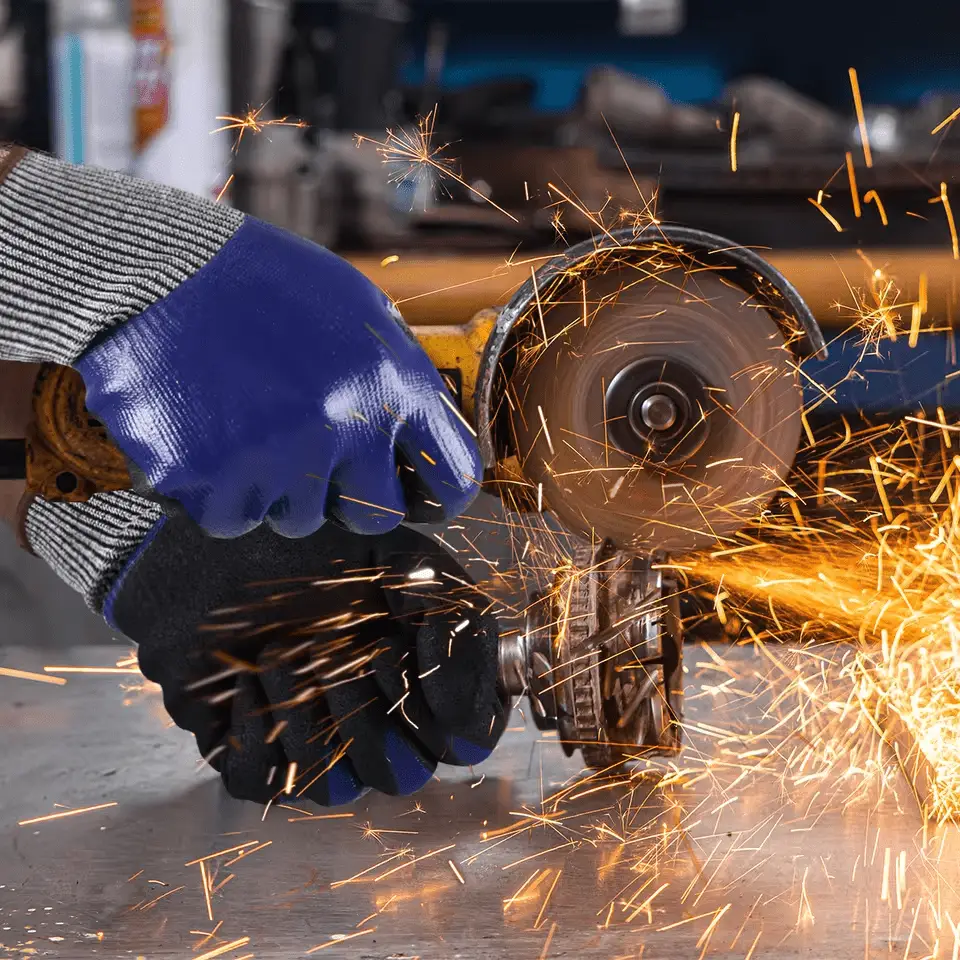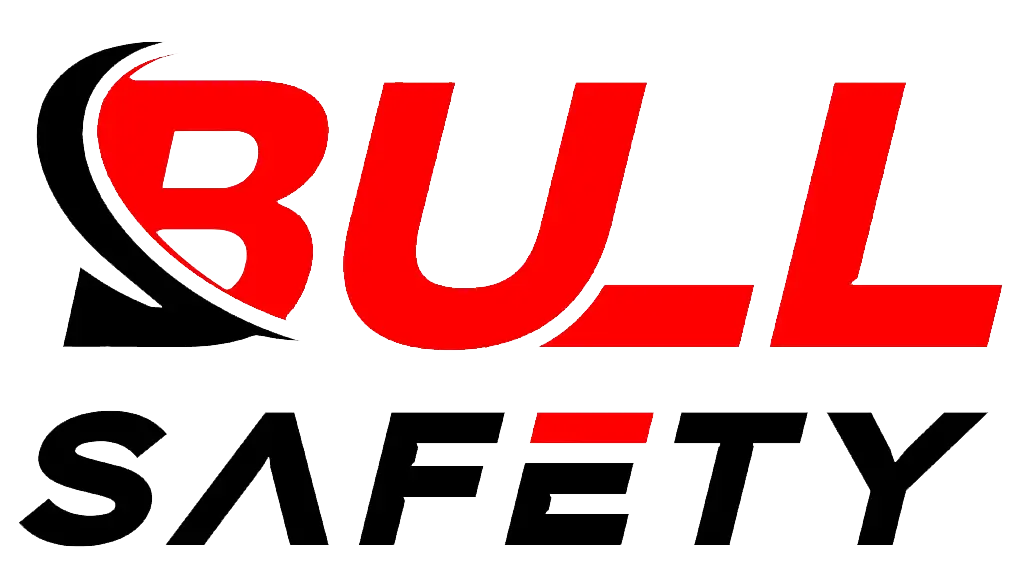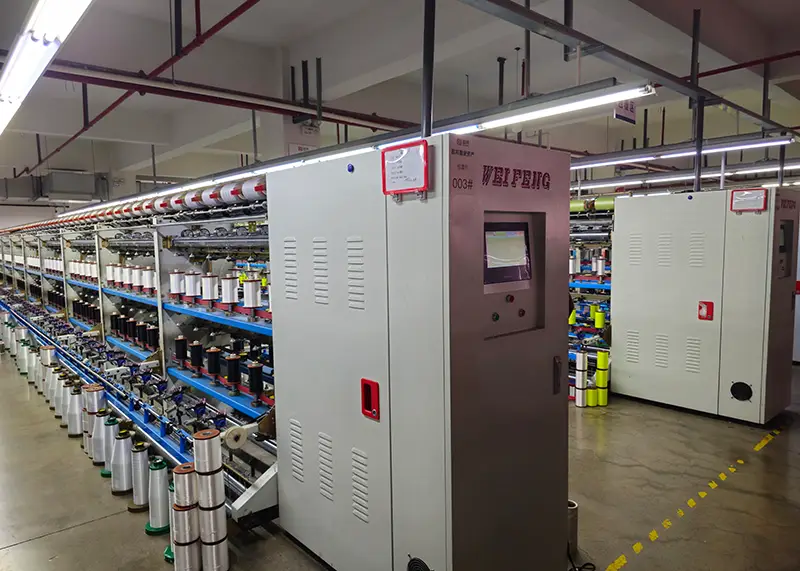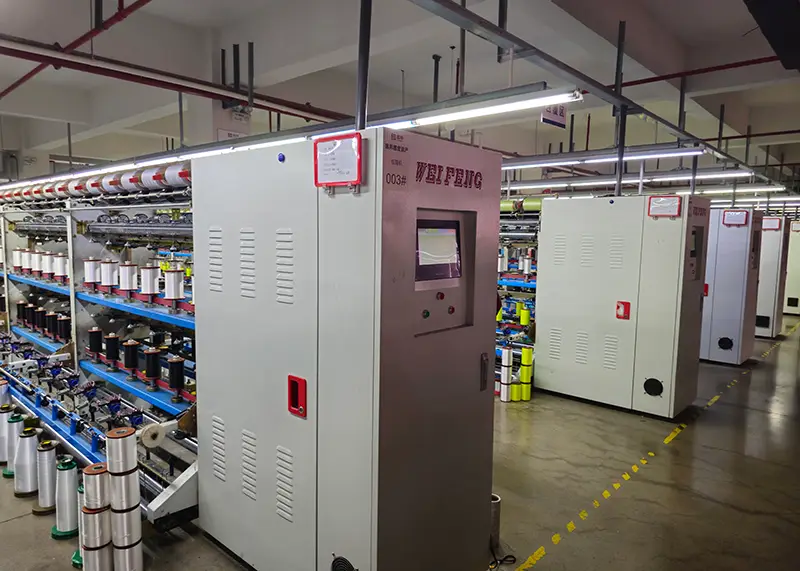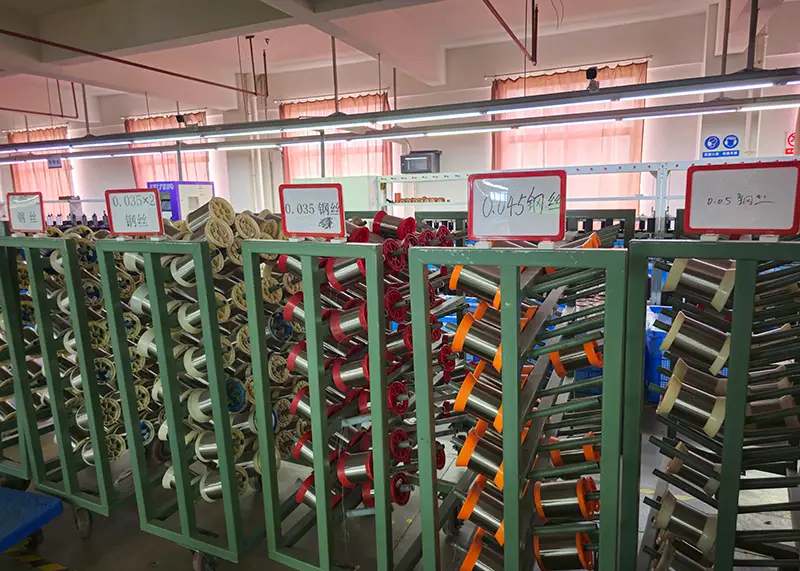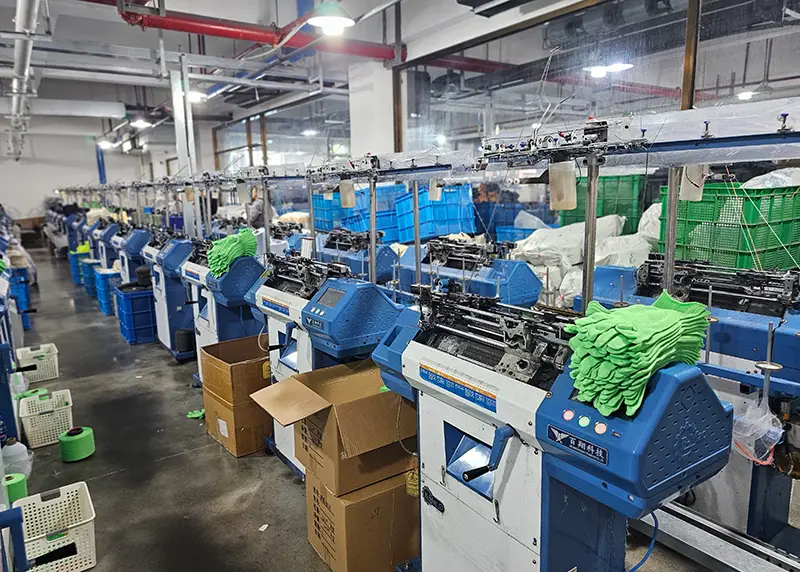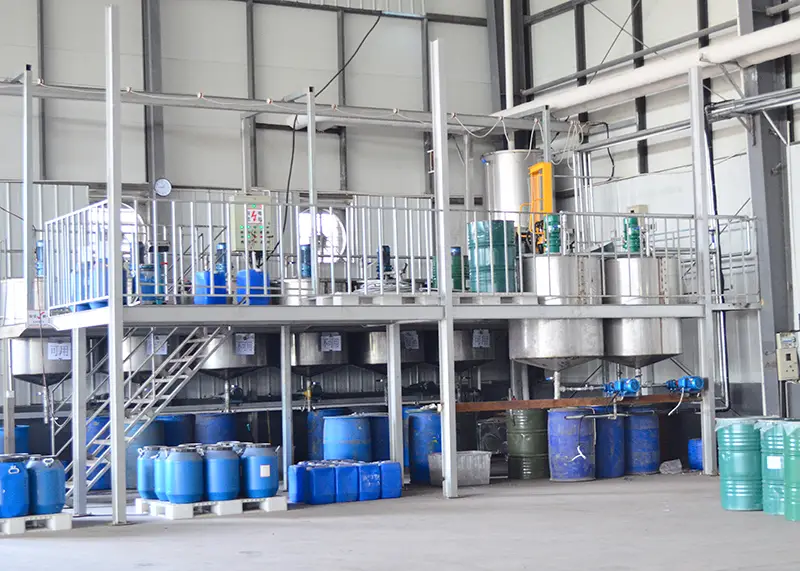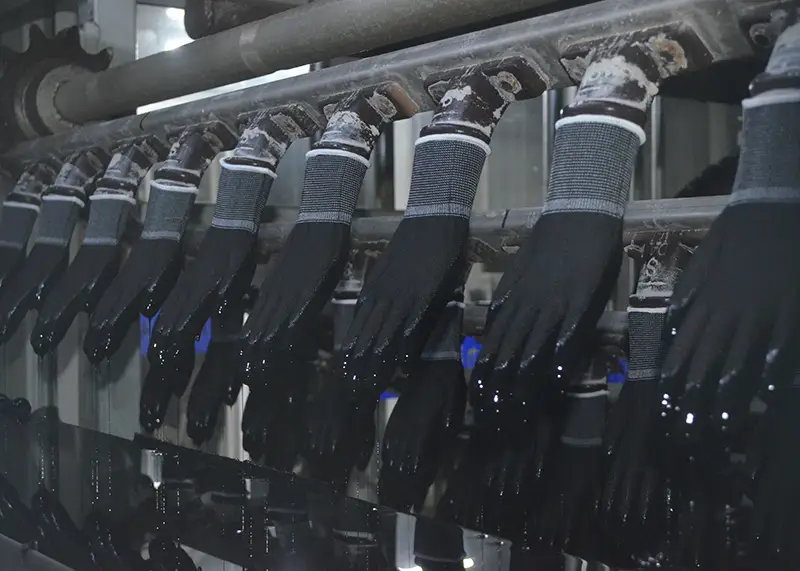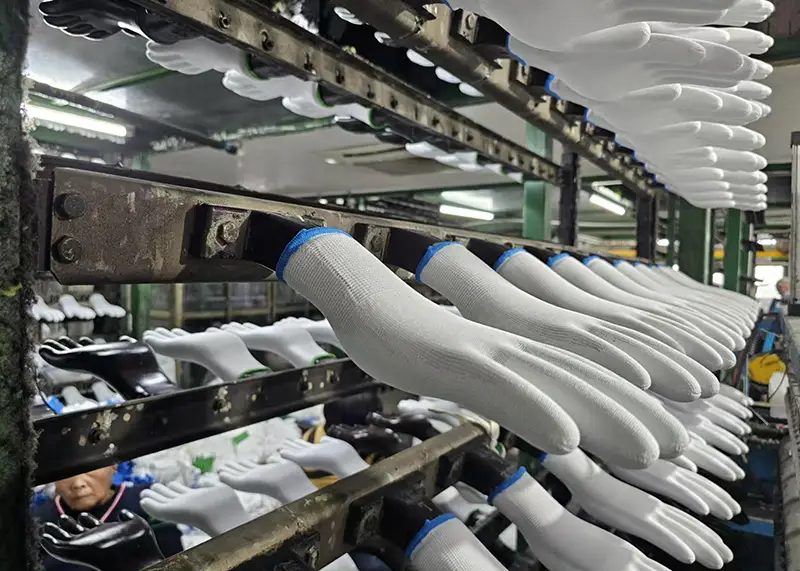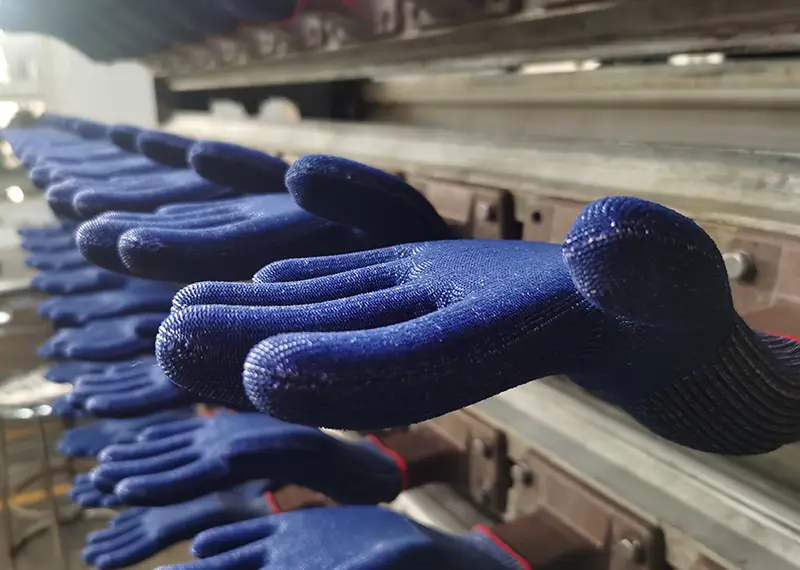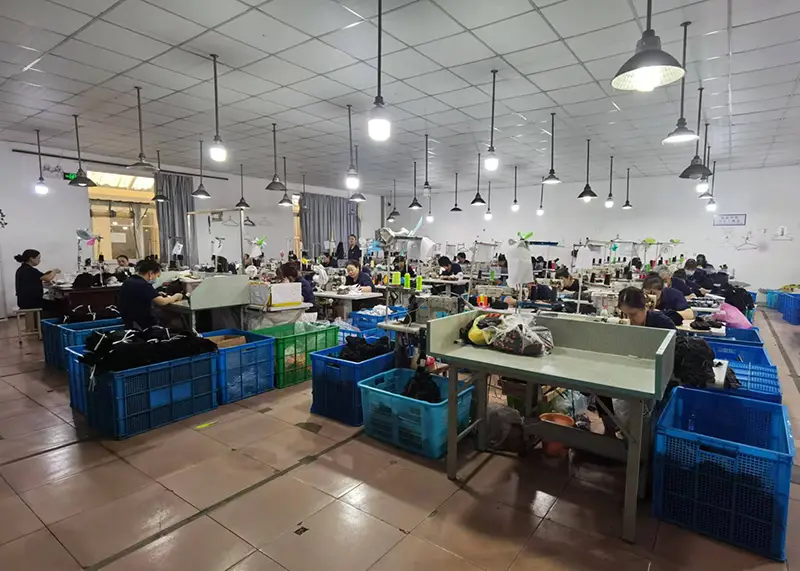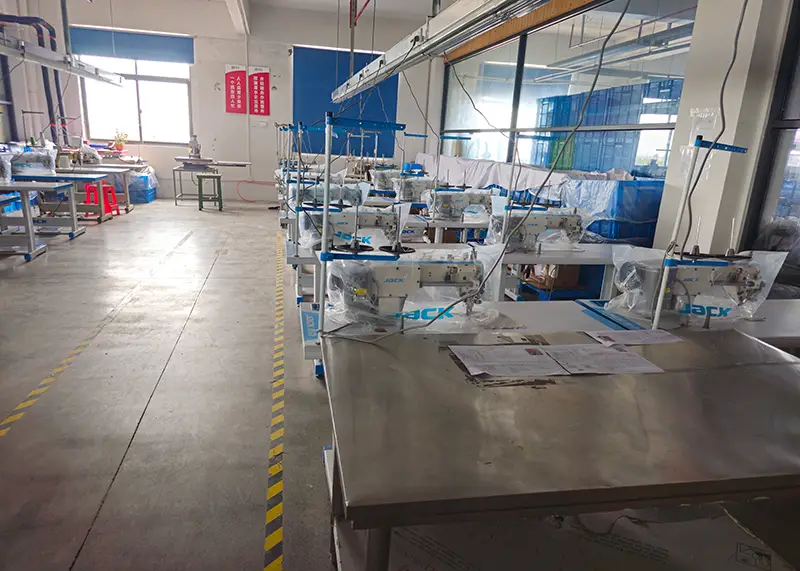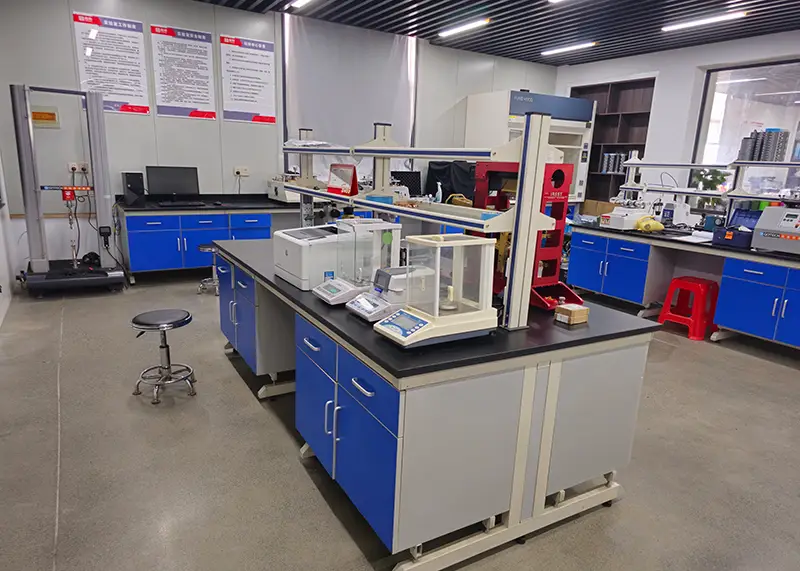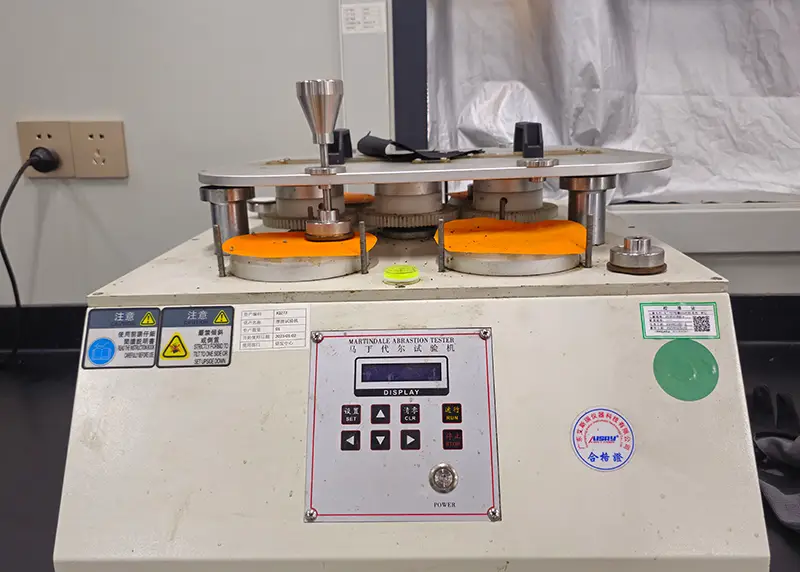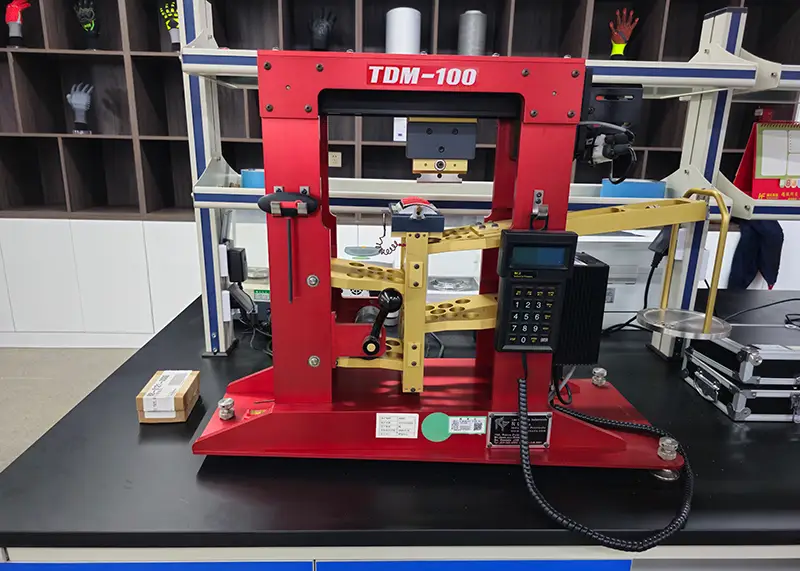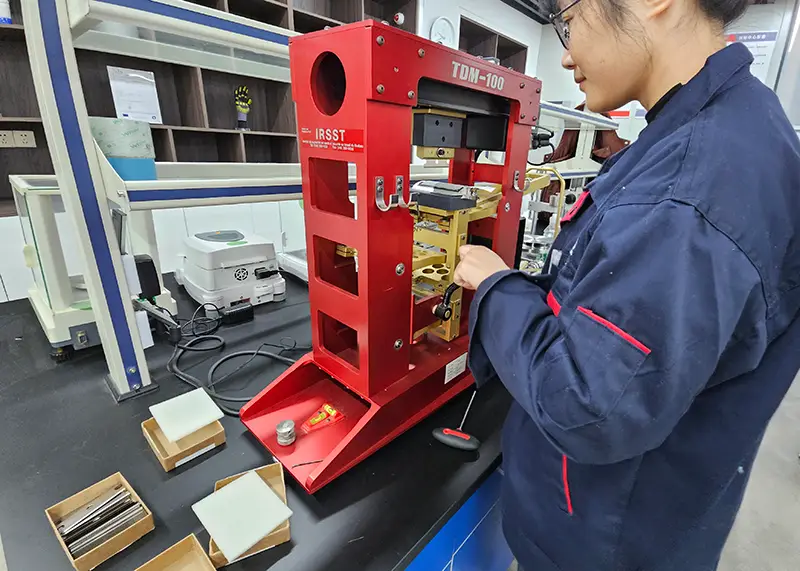Waterproof Cut Resistant Gloves Manufacturer
When it comes to handling sharp objects or working in wet conditions, the right gloves can make all the difference. BullSafety’s Waterproof Cut Resistant Gloves are designed to provide superior protection, combining durability, comfort, and functionality for a variety of industrial applications.
------- ISO9001 Certified
CE certificates
ISO14001 Certified
ANSI Certified

GD510
- Product: 13 Gauge Double Nitrile Coated Cut Resistant Gloves
- Standards: 4X43D & A4
- Coating Coverage: Smooth Nitrile Full Coating & Black Sandy Nitrile Palm Coating
- Add: Touchscreen
- Grip: Sandy Nitrile
- Cuff: Knit Wrist
- Sizes: M-2XL
- Packed: 120 Pair/Case

GD600
- Product: 15 Gauge Sandy Nitrile Palm Coated Cut Resistant Gloves
- Standards: 4X43D & A5
- Coating Coverage: Smooth Nitrile Full Coating & Black Sandy Nitrile Palm Coating
- Add: Touchscreen
- Grip: Sandy Nitrile
- Cuff: Knit Wrist
- Sizes: M-2XL
- Packed: 120 Pair/Case

GD610
- Product: 18 Gauge Sandy Nitrile Palm Coated Cut Resistant Gloves
- Standards: 4X43D & A4
- Coating Coverage: Palm & Fingers
- Add: Touchscreen
- Grip: Smooth Nitrile Full Coating & Black Sandy Nitrile Palm Coating
- Cuff: Knit Wrist
- Sizes: M-2XL
- Packed: 120 Pair/Case
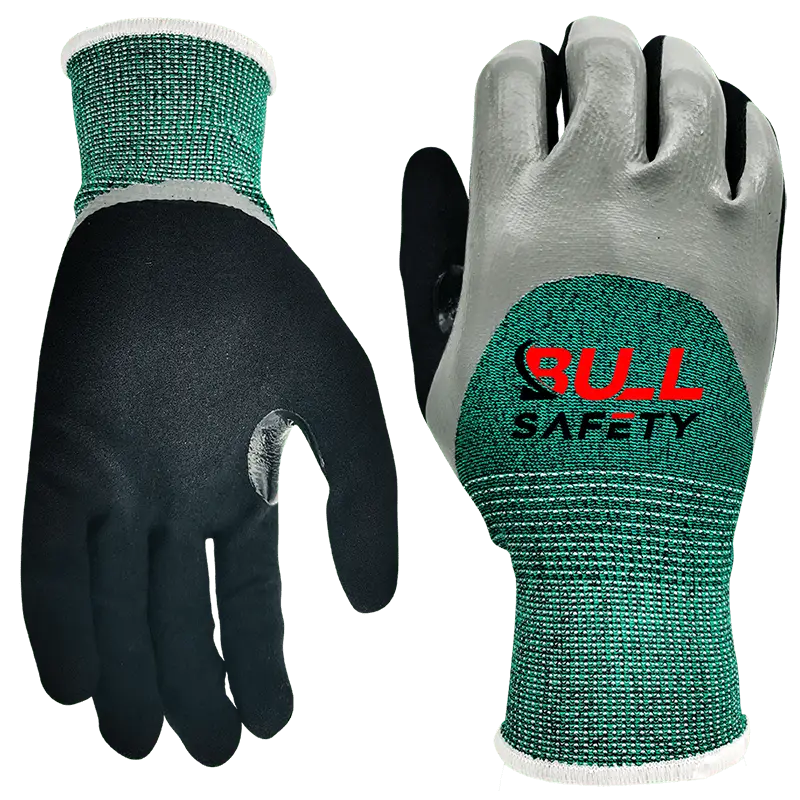
GD700
- Product: 18 Gauge Sandy Nitrile Palm Coated Cut Resistant Gloves
- Standards: 4X43B & A2
- Coating Coverage: Palm & Fingers
- Add: Touchscreen
- Grip: Smooth Nitrile Full Coating & Black Sandy Nitrile Palm Coating
- Cuff: Knit Wrist
- Sizes: M-2XL
- Packed: 120 Pair/Case
Key Features
Waterproof cut-resistant gloves are designed to protect hands in tough environments. They combine advanced cut protection with a waterproof coating, ensuring safety, comfort, and excellent grip in wet or oily conditions. Ideal for industries requiring durable and reliable hand protection.
Cut Protection
Our gloves are engineered with advanced cut-resistant materials, ensuring protection against sharp tools, blades, and machinery.
Waterproof Layer
Coated with nitrile, latex, or polyurethane to ensure complete protection against water, oils, and other liquids.
Enhanced Grip
Textured or sandy finishes on the palm provide superior grip, even in wet or oily conditions.
Durability
Reinforced in high-wear areas for prolonged use in demanding environments.
Versatile Applications
Ideal for industries such as construction, manufacturing, logistics, and agriculture, where workers face both wet conditions and the risk of cuts.
Comfort
Lined with breathable materials to keep hands dry and reduce fatigue during extended use.
What Can Bullsafety Customise for You
Knitting Counts
Cut Resistance
Levels from European Cut A to Cut F and United States ANSI A1 to A9 are provided. These standards ensure necessary protection. Customers can choose the appropriate level based on their safety requirements.
Dipping Types
Various types are offered, including PU, wrinkled latex, foam latex, sandy latex, sandy nitrile, glossy nitrile, foamed nitrile, and water-washed microfoam. These enhance grip and comfort, catering to different preferences and needs.

Simplify Your Custom Glove Production Process with BullSafety
At BullSafety, we’ve made the customization of your hand protection solutions as easy as possible. Our seamless, four-step process ensures that you receive full support throughout the journey of creating your custom gloves, from design to production.
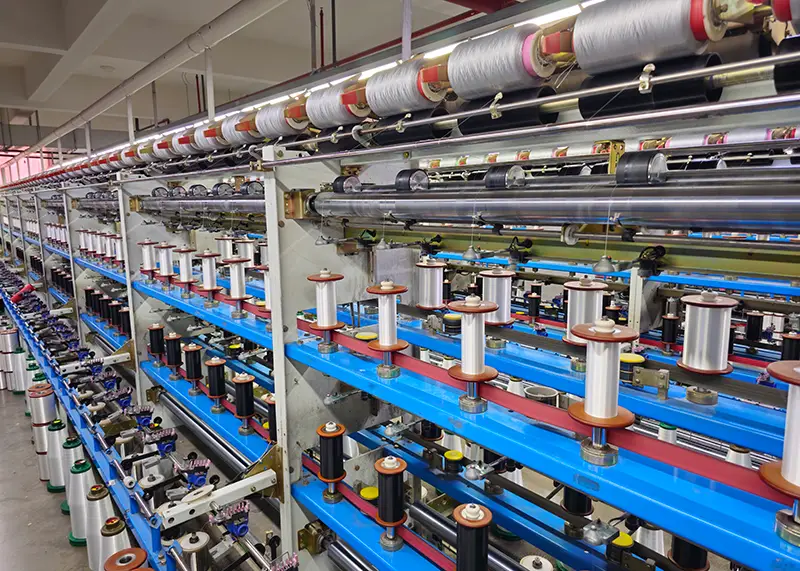
Define Usage Needs
Share the details of your working environment. Includes temperature, exposure to chemicals, abrasion levels, and overall hand safety requirements. We’ll ensure the materials are perfectly suited to meet the your demands.
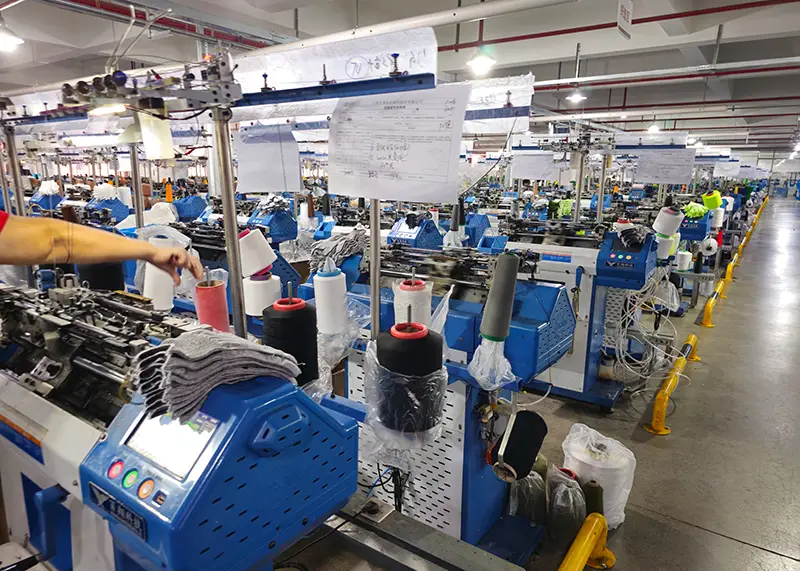
Specify Application
Clearly outline the purpose your gloves will serve. Whether it’s for heavy-duty work, high dexterity tasks, or protection from specific hazards, our team will ensure the design fits your needs exactly.
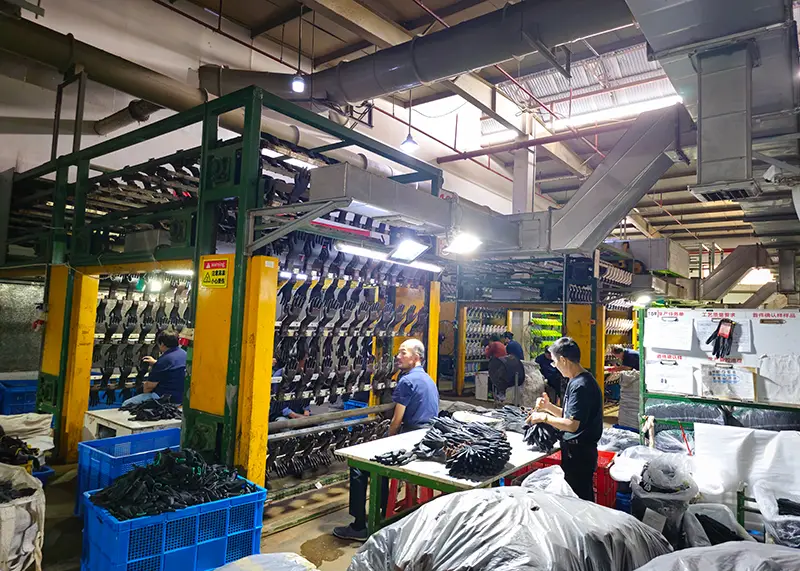
Select Protection Features
Choose the protection levels that best suit your needs. From cut-resistant properties to enhanced grip and comfort, we can integrate the right features for maximum safety and performance.
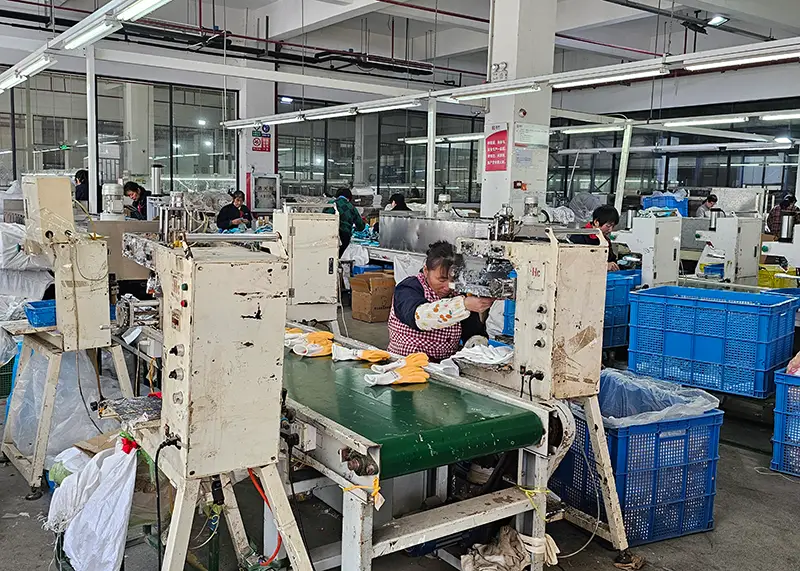
Finalizing Design & Specifications
Submit your designs, dimensions, and preferences. We’ll refine the specifications and ensure your gloves are manufactured to your exact requirements, ensuring they perform just as you envisioned.
Bull Safety Quality Control Process
Yarn Inspection for Superior Quality
At BullSafety, we understand that the foundation of a durable glove starts with premium yarn. Our rigorous yarn inspection process ensures every batch meets strict quality and performance standards. By verifying strength, consistency, and elasticity, we guarantee that the materials used in our gloves provide maximum protection and comfort. This meticulous approach helps us deliver reliable products that meet the demands of PPE wholesalers and their customers.
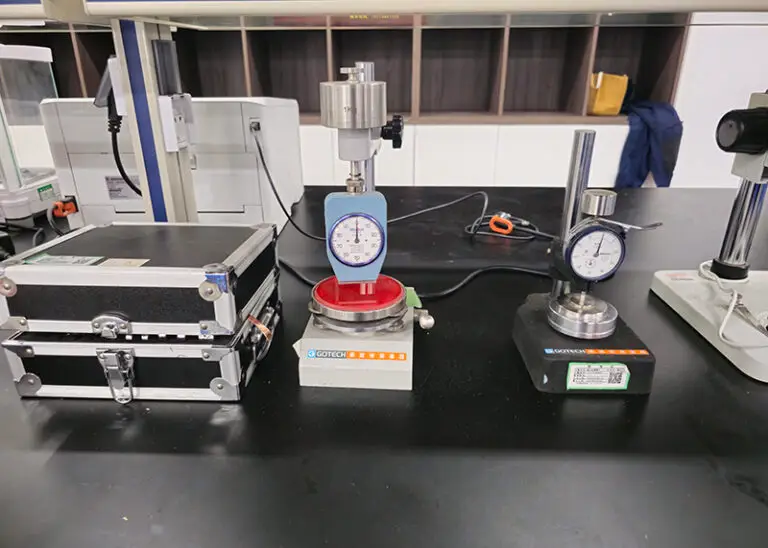
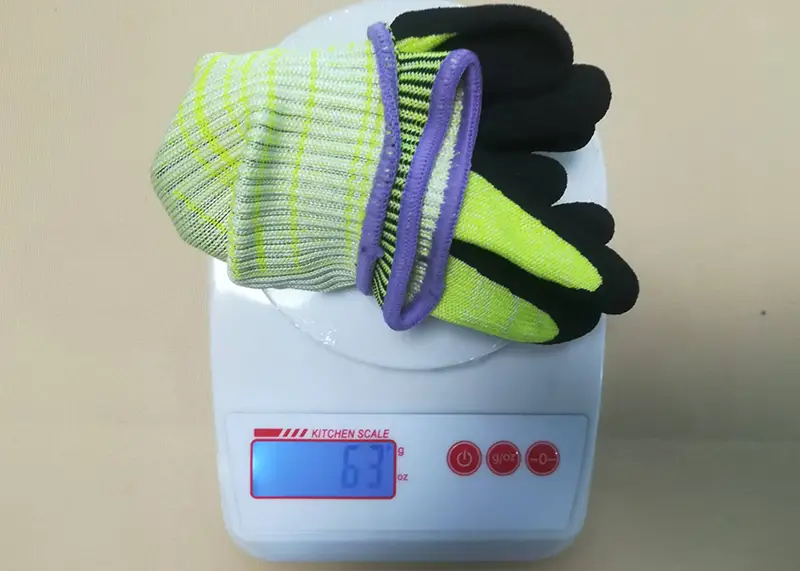
At BullSafety, we carefully measure the weight of each glove to ensure consistent quality and performance. Our precise weight inspection guarantees that gloves meet the required standards for comfort, durability, and protection, without compromising on material efficiency. This attention to detail ensures that every pair of gloves provides the optimal balance between strength and flexibility, making them a reliable choice for wholesalers and their customers.
BullSafety conducts precise glove size measurements to ensure a perfect fit and optimal performance. Our thorough inspection process checks for accuracy in sizing, from small to extra-large, ensuring consistency across all products. By adhering to international sizing standards, we provide gloves that deliver comfort, mobility, and safety, meeting the needs of your customers. Trust our meticulous measurement system for reliable, high-quality gloves every time.
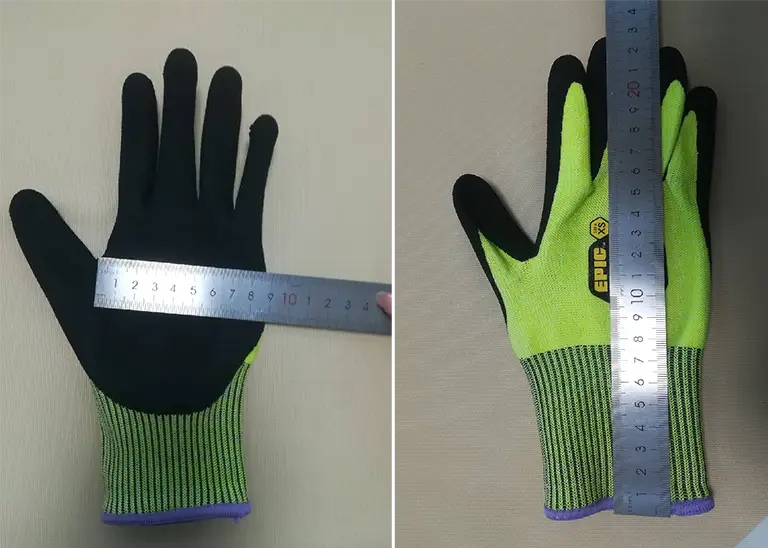

BullSafety conducts comprehensive performance testing to ensure our gloves meet the highest safety standards. Our abrasion resistance tests evaluate the durability of gloves under repeated friction, ensuring long-lasting protection. Additionally, our TDM cut-resistance tests measure the gloves’ ability to resist sharp objects, providing a reliable indication of their protective qualities. These rigorous tests guarantee that our gloves offer superior performance and safety for your customers, making them a trusted choice for PPE wholesalers.
Precision Manufacturing
CERTIFICATES OF BULL SAFETY
Waterproof Gloves Buyer Guide
Table of Content
Chapter 1
Product Specifications
Level of Cut Resistance of The Gloves
What Are CE Cut Levels (EN388: 2016) & ISO 13997 Cut Levels?
Both CE (EN388: 2016) and ISO 13997 provide international standards for measuring cut resistance. Understanding these standards can help you select the best gloves for your work environment.
The CE certification (EN388: 2016) focuses on abrasion, tear, and puncture resistance, while ISO 13997 evaluates cut resistance specifically. Knowing these ratings helps you choose gloves that meet your safety needs.
How CE Cut Levels & ISO 13997 Differ?
CE levels focus on general glove durability, while ISO13997 is dedicated to cut resistance. Here’s a breakdown of what each standard means for cut-resistant gloves.
| EN388 Cut Levels | ISO 13997 Cut Levels |
|---|---|
| Level 1: Low cut resistance | A: 2.0 – 5.0 Newtons |
| Level 2: Medium cut resistance | B: 5.1 – 10.0 Newtons |
| Level 3: High cut resistance | C: 10.1 – 15.0 Newtons |
| Level 4: Very high cut resistance | D: 15.1 – 22.0 Newtons |
| Level 5: Extreme cut resistance | E: 22.1 – 30.0 Newtons |
| Level 6: Maximum cut resistance | F: > 30.0 Newtons |
These ratings help you determine the appropriate level of cut resistance for your specific work conditions. A higher rating means better protection against sharp objects.
What Are ANSI Cut Levels and How Do They Compare to CE & ISO Ratings?
ANSI (American National Standards Institute) provides another cut resistance rating system, which may be used in conjunction with CE and ISO ratings.
ANSI cut levels range from 1 to 5, where level 5 provides the highest cut resistance. ANSI testing methods differ from ISO and EN388, but they offer another useful metric for understanding glove safety.
Comparing ANSI and International Cut Ratings
ANSI levels are based on a different testing method, which uses a rotating blade to measure the glove’s resistance. Here’s how ANSI ratings compare to the CE and ISO ratings:
| ANSI Cut Levels | CE (EN388) Equivalent | ISO 13997 Equivalent |
|---|---|---|
| Level 1: Light cut protection | Level 1 | A |
| Level 2: Moderate cut protection | Level 2 | B |
| Level 3: High cut protection | Level 3 | C |
| Level 4: Very high cut protection | Level 4 | D |
| Level 5: Maximum cut protection | Level 5 | E or F |
ANSI’s system is commonly used in North America and complements European and international standards. By understanding these ratings, you can ensure you’re selecting the right gloves based on your specific region and needs.
Are the gloves fully waterproof, or are they water-resistant?
The terms waterproof and water-resistant are often used interchangeably, but there’s an important distinction between the two. Understanding this can help you select the right gloves for your specific needs.
- Water-resistant gloves can handle minor exposure to moisture and light water contact, but they may not protect against heavy rain, submersion, or continuous wet conditions.
- Waterproof gloves, on the other hand, offer complete protection from water, ensuring that no moisture can seep through the glove, even in the harshest of environments.
Waterproof gloves are designed with materials and construction methods that prevent water from entering the glove, keeping your hands dry during prolonged exposure to wet conditions. Water-resistant gloves, though still protective, are more suitable for environments where only brief exposure to moisture is expected.
How Waterproofing Technology Works in Gloves
To understand how waterproof gloves work, it’s essential to look at the materials and technologies used in their construction. The primary waterproofing methods include coatings, membranes, and sealed seams. Let’s take a closer look at each:
Waterproof Coatings: Some gloves are coated with specialized waterproof materials, such as latex, nitrile, or PVC. These coatings act as barriers, preventing water from penetrating the glove while maintaining flexibility and dexterity.
Waterproof Membranes: Gloves with built-in waterproof membranes, like Gore-Tex or Sympatex, feature thin, breathable layers that block water from getting inside while allowing sweat and moisture from your hands to escape. This helps keep your hands dry from both external water exposure and internal perspiration.
Sealed Seams: Waterproof gloves often use sealed or welded seams to eliminate the risk of water entering through stitch holes. This is especially important for gloves used in submerged or heavily wet conditions, where even small openings can let in water.
What Is the Specific Waterproofing Technology Used in These Gloves?
Comparing Waterproofing Technologies
| Waterproofing Technology | Description | Advantages | Best For |
|---|---|---|---|
| Gore-Tex Membrane | A thin, breathable waterproof membrane that blocks water but allows sweat to escape. | Highly breathable, lightweight, durable | Extreme wet conditions, outdoor work |
| PVC Coating | A plastic coating that fully blocks water. | Affordable, effective against water exposure | Light to moderate wet work, industrial use |
| Nitrile Coating | A synthetic rubber coating that provides a strong barrier against water and oil. | Flexible, oil-resistant, durable | Wet or oily environments, construction |
| Latex Coating | A natural rubber coating known for its elasticity and waterproof properties. | Provides a secure fit, comfortable | Wet conditions, food industry, general use |
Chapter 2
Certificates
Are the Gloves CE-Certified, and Do They Meet Relevant Safety Standards such as EN 388 for Cut Resistance and EN 420 for Glove Ergonomics and Protection?
CE-certified gloves must meet the safety and performance criteria established by European standards like EN 388 for cut resistance and EN 420 for glove ergonomics. These standards are crucial for evaluating the glove’s ability to protect workers from potential hazards, including cuts, abrasions, and ergonomics-related issues.
The EN 388 standard tests gloves for their abrasion, cut, tear, and puncture resistance. It assigns a rating to gloves based on their performance in these four categories. This rating helps determine how well a glove will withstand physical hazards like sharp objects, which is especially important in industries like construction, manufacturing, and metalworking.
| EN 388 Rating | Meaning |
|---|---|
| Abrasion | Resistance to friction and wear (rated 1-4) |
| Cut Resistance | Resistance to cuts (rated 1-5) |
| Tear Resistance | Resistance to tearing (rated 1-4) |
| Puncture Resistance | Resistance to punctures (rated 1-4) |
The EN 420 standard focuses on ergonomics and general protection of the glove. It ensures the glove fits comfortably and is suitable for long-term use without causing undue strain on the hands. It also ensures gloves do not contain harmful substances, making them safer for workers.
Are the Gloves Tested and Compliant with Other Relevant Standards (e.g., ISO, ASTM)?
Apart from CE certification, there are other essential standards like ISO and ASTM that ensure gloves meet specific performance requirements. While CE certification is primarily recognized in Europe, ISO and ASTM are widely used internationally, especially in North America.
ISO standards (such as ISO 13997) focus on specific performance aspects like cut resistance, while ASTM standards (like ASTM F2992-15) test gloves for puncture resistance and other mechanical properties. These standards help to ensure that gloves provide protection against a wide range of hazards, not just cuts, but also punctures, abrasions, and more.
How ISO and ASTM Standards Differ?
ISO 13997: Often used for cut resistance, it measures how much force is needed to cut through the glove material using a straight blade. This standard is used internationally and ensures gloves provide adequate protection in industries where sharp objects pose a significant risk.
ASTM F2992-15: This standard specifically tests gloves for puncture resistance by using a standard puncture device. It’s commonly used in industries like welding and mining, where workers are exposed to sharp or hazardous materials that may puncture gloves.
| Standard | Focus | Industry Application |
|---|---|---|
| ISO 13997 | Cut resistance | International (e.g., manufacturing, food processing) |
| ASTM F2992-15 | Puncture resistance | North America (e.g., welding, metalworking) |
| EN 388 | Abrasion, cut, tear, and puncture resistance | Europe (e.g., construction, logistics) |
Chapter 3
Customization Options
Do You Offer Customizations for Sizes, Colors, or Logo Branding?
We offer extensive customization options, including various sizes, colors, and logo branding, to ensure that the gloves meet your requirements for both practicality and aesthetic appeal.
Sizes: Gloves come in different sizes to ensure a perfect fit for every worker. Whether you’re looking for small, medium, large, or even extra-large sizes, we can provide gloves that fit comfortably, improving both safety and productivity.
Colors: Customizing glove colors can serve a variety of purposes, from ensuring workers are easily visible to matching company colors or branding guidelines. Custom colors can also help differentiate between different departments or functions within an organization.
Logo Branding: Adding a logo to gloves is a great way to promote your brand while ensuring safety. Our customization process allows you to have your company’s logo, name, or other branding elements printed or embroidered on the gloves, creating a professional, uniform look for your employees.
Can You Modify the Gloves for Specific Industries or Applications (e.g., Construction, Automotive, or Food Handling)?
Yes, gloves can be specifically designed or modified to meet the unique requirements of various industries, ensuring both safety and performance. Customization goes beyond appearance and fit—it can also extend to the materials, coatings, and features used in the gloves to make them suitable for specific tasks.
Construction: Gloves designed for construction need to offer superior durability, cut resistance, and protection against abrasions. We can modify the gloves with additional features such as reinforced palms or impact-resistant padding to meet the rigorous demands of construction work.
Automotive: In the automotive industry, gloves must not only offer protection from sharp objects and oils but also provide flexibility for handling small parts and tools. Custom automotive gloves can be fitted with oil-resistant coatings and high-grip materials to ensure better control and safety.
Food Handling: For the food industry, gloves must adhere to strict hygiene standards and be free from harmful chemicals. Custom modifications for food handling gloves may include food-safe materials, FDA-approved coatings, and breathable designs to ensure comfort and safety while preparing or handling food.
Industry-Specific Modifications
| Industry | Customization Features | Common Modifications |
|---|---|---|
| Construction | Cut resistance, impact protection, durability | Reinforced palms, knuckle protection, heavy-duty coatings |
| Automotive | Oil resistance, grip, flexibility | Oil-resistant coatings, non-slip palms, high-dexterity designs |
| Food Handling | Hygiene, safety, comfort | FDA-approved materials, breathable fabrics, color coding |
ISO standards (such as ISO 13997) focus on specific performance aspects like cut resistance, while ASTM standards (like ASTM F2992-15) test gloves for puncture resistance and other mechanical properties. These standards help to ensure that gloves provide protection against a wide range of hazards, not just cuts, but also punctures, abrasions, and more.
Chapter 4
Samples and Trial Period
Can I Receive Samples for Evaluation Before Placing a Full Order?
Yes, we offer samples for evaluation before you commit to a full order. We understand that it’s important to assess the quality, fit, and performance of gloves before making a bulk purchase, especially for businesses or industries that require specific protective gear. By providing samples, we ensure that you have the opportunity to test the gloves in real-world conditions to ensure they meet your needs.
Receiving samples allows you to evaluate several factors: the glove’s durability, comfort, fit, and the overall protection they offer. Whether you’re testing gloves for workers in the construction industry or for food handling, this step ensures the gloves will perform effectively and meet safety standards.
Why Receiving Samples Matters
- Quality Assurance: By receiving samples first, you can physically inspect the gloves to verify that the quality matches your expectations. You can also test for durability and whether the gloves hold up under your specific working conditions.
- Fit and Comfort: Gloves that don’t fit properly can lead to discomfort and poor performance. Testing the sample gloves allows you to ensure the right fit for your employees, reducing the chances of issues like hand fatigue or irritation.
- Suitability for Application: Different tasks require different types of gloves. A sample allows you to assess whether the gloves are suitable for your particular application—whether it’s construction, automotive, food handling, or another industry.
Do You Offer a Trial Period or Satisfaction Guarantee for the Gloves?
Yes, we offer a trial period and satisfaction guarantee for the gloves, which is especially important for bulk purchases. We want to ensure that our customers are fully satisfied with their order, which is why we allow a trial period to test the gloves in action before fully committing.
A trial period helps you evaluate the gloves over time and in real working conditions, making sure they meet both performance and comfort standards. If the gloves don’t meet your expectations, we can address any issues or offer replacements to ensure you are happy with your purchase.
How a Trial Period Protects Your Investment
- Performance Testing: A trial period allows you to evaluate the gloves’ performance over a longer time, ensuring they hold up under regular wear and tear. This is particularly important for gloves used in heavy-duty industries where durability is a top priority.
- Easy Returns or Exchanges: Our satisfaction guarantee ensures that if the gloves do not meet your needs or expectations, you have the option to return or exchange them. This removes the risk from the purchasing decision.
- Peace of Mind: Knowing you have the option for a trial period or satisfaction guarantee gives you peace of mind. You can place your order knowing that if the gloves don’t work out, you have options for resolution.
Why a Trial Period or Satisfaction Guarantee is Important for Your Business
When purchasing work gloves in bulk, the stakes are high. You need gloves that provide the right protection, comfort, and durability for your employees. A trial period or satisfaction guarantee makes it easier to make a decision because you can test the gloves in real conditions, ensuring they perform well and meet the standards required for safety and productivity.
Chapter 5
Samples and Trial Period
Can I Receive Samples for Evaluation Before Placing a Full Order?
Yes, we offer samples for evaluation before you commit to a full order. We understand that it’s important to assess the quality, fit, and performance of gloves before making a bulk purchase, especially for businesses or industries that require specific protective gear. By providing samples, we ensure that you have the opportunity to test the gloves in real-world conditions to ensure they meet your needs.
Receiving samples allows you to evaluate several factors: the glove’s durability, comfort, fit, and the overall protection they offer. Whether you’re testing gloves for workers in the construction industry or for food handling, this step ensures the gloves will perform effectively and meet safety standards.
Why Receiving Samples Matters
- Quality Assurance: By receiving samples first, you can physically inspect the gloves to verify that the quality matches your expectations. You can also test for durability and whether the gloves hold up under your specific working conditions.
- Fit and Comfort: Gloves that don’t fit properly can lead to discomfort and poor performance. Testing the sample gloves allows you to ensure the right fit for your employees, reducing the chances of issues like hand fatigue or irritation.
- Suitability for Application: Different tasks require different types of gloves. A sample allows you to assess whether the gloves are suitable for your particular application—whether it’s construction, automotive, food handling, or another industry.
Do You Offer a Trial Period or Satisfaction Guarantee for the Gloves?
Yes, we offer a trial period and satisfaction guarantee for the gloves, which is especially important for bulk purchases. We want to ensure that our customers are fully satisfied with their order, which is why we allow a trial period to test the gloves in action before fully committing.
A trial period helps you evaluate the gloves over time and in real working conditions, making sure they meet both performance and comfort standards. If the gloves don’t meet your expectations, we can address any issues or offer replacements to ensure you are happy with your purchase.
How a Trial Period Protects Your Investment
- Performance Testing: A trial period allows you to evaluate the gloves’ performance over a longer time, ensuring they hold up under regular wear and tear. This is particularly important for gloves used in heavy-duty industries where durability is a top priority.
- Easy Returns or Exchanges: Our satisfaction guarantee ensures that if the gloves do not meet your needs or expectations, you have the option to return or exchange them. This removes the risk from the purchasing decision.
- Peace of Mind: Knowing you have the option for a trial period or satisfaction guarantee gives you peace of mind. You can place your order knowing that if the gloves don’t work out, you have options for resolution.
Why a Trial Period or Satisfaction Guarantee is Important for Your Business
When purchasing work gloves in bulk, the stakes are high. You need gloves that provide the right protection, comfort, and durability for your employees. A trial period or satisfaction guarantee makes it easier to make a decision because you can test the gloves in real conditions, ensuring they perform well and meet the standards required for safety and productivity.
Chapter 6
Samples and Trial Period
What quality control processes do you have in place to ensure the gloves meet performance standards?
We take quality control seriously at every step of production, ensuring that every glove leaving our factory is up to the highest standards of safety, comfort, and performance. Our quality control processes are comprehensive and cover all aspects of glove manufacturing—from the initial material selection to the final inspection before shipment.
Key steps in our quality control process include:
- Material Inspection: We source high-quality raw materials like HPPE yarns and nitrile, latex, or PU coatings. All materials are inspected for consistency, durability, and performance.
- Production Monitoring: During production, we closely monitor the glove-making process to ensure that each step is carried out precisely. This includes checking the knitting, dipping, coating, and sewing processes.
- Quality Control Inspections: Throughout the production stages, random samples are taken and tested for key attributes such as strength, flexibility, cut resistance, and comfort. Any defects or inconsistencies are flagged and corrected immediately.
- Final Inspection: Before shipment, each pair of gloves undergoes a final inspection. This includes a visual check for any defects, as well as functional tests to ensure gloves meet all required performance standards.
Can you provide test reports for cut resistance and waterproofing?
Yes, we provide detailed test reports for important performance metrics like cut resistance and waterproofing. These reports offer transparency and give you the confidence that our gloves meet the required safety and performance standards.
Here’s how we ensure gloves are tested properly for cut resistance and waterproofing:
- Cut Resistance Testing: Our gloves undergo rigorous cut resistance testing based on industry-standard methods like EN 388:2016 (for European markets) and ANSI/ISEA 105 (for North American markets). These tests evaluate the glove’s ability to resist cutting and tearing from sharp objects, ensuring workers are protected in environments where cut hazards are prevalent.
- Waterproofing Testing: Waterproof gloves are tested to determine their effectiveness at keeping moisture out while ensuring breathability. We use standardized tests to evaluate the gloves’ water resistance or waterproofing capabilities, ensuring they provide protection in wet or hazardous environments, such as when working with liquids or in rainy conditions.
Understanding Test Reports for Cut Resistance and Waterproofing
| Test Type | Standard | What It Measures | Why It’s Important |
|---|---|---|---|
| Cut Resistance | EN 388:2016, ANSI 105 | Resistance to cuts and slashes by sharp objects | Protects workers from cuts in high-risk environments |
| Waterproofing | AATCC 127, ISO 811 | Ability to prevent water penetration | Ensures protection from water or liquids in wet conditions |
Why Testing Is Crucial:
- Cut Resistance: For industries like construction or manufacturing, cut resistance is vital to prevent injuries. Having certified test reports ensures that the gloves will perform as expected under high-risk conditions.
- Waterproofing: For workers in wet conditions, whether in food handling or outdoor environments, waterproof gloves provide crucial protection. Testing confirms that the gloves will keep hands dry, ensuring both comfort and safety.
FAQ About Waterproof Cut Resistant Gloves
This FAQ section provides answers to common questions about waterproof cut-resistant gloves. It covers key topics like materials, sizing, usage, and care, helping you make informed decisions when selecting the right gloves for your work environment.
1. What are waterproof cut-resistant gloves?
These gloves are designed to protect hands from cuts and abrasions while providing a waterproof barrier against liquids like water, oils, and chemicals.
2. What materials are used in these gloves?
They typically feature high-performance fibers like HPPE or Kevlar for cut resistance and a coating like nitrile, latex, or polyurethane for waterproofing.
3. Are these gloves comfortable for extended use?
Yes, they are designed with breathable liners and ergonomic fits to reduce hand fatigue during long work hours.
4. What industries can benefit from these gloves?
They are ideal for construction, automotive, oil and gas, metalworking, and other industries requiring durable and protective handwear.
5. How do I ensure the gloves meet safety standards?
Look for certifications like CE (EN 388) or ANSI standards, which guarantee reliable protection and performance.
6. Can they be used in wet and oily conditions?
Absolutely. Their textured coatings provide a secure grip in slippery environments.
7. How do I choose the right size?
Choosing the right size is essential for comfort, safety, and performance. Follow these steps to measure your hand and refer to the sizing chart for an accurate fit:
Steps to Measure Your Hand:
- Find a Measuring Tape: Use a flexible measuring tape for precise measurement.
- Measure Your Hand Circumference:
- Wrap the tape around the widest part of your hand, just below the knuckles (excluding your thumb).
- Keep the tape snug but not tight.
- Note the Measurement: Write down the measurement in inches or centimeters.
- Compare to the Sizing Chart: Refer to the manufacturer’s sizing chart below to determine your glove size.
Sizing Chart for Gloves
| Hand Circumference (inches) | Hand Circumference (cm) | Glove Size |
|---|---|---|
| 6 – 7 inches | 15 – 18 cm | Small (S) |
| 7 – 8 inches | 18 – 20 cm | Medium (M) |
| 8 – 9 inches | 20 – 23 cm | Large (L) |
| 9 – 10 inches | 23 – 25 cm | X-Large (XL) |
| 10 – 11 inches | 25 – 28 cm | XX-Large (XXL) |
8. How should I care for these gloves?
Clean them according to the manufacturer’s instructions and store them in a dry, cool place to prolong their lifespan.
9. Are these gloves reusable?
Yes, they are reusable as long as they remain in good condition and meet safety requirements for your tasks.
10. Can they resist chemicals?
While they are waterproof, specific chemical resistance depends on the coating material. Check product specifications for chemical handling suitability.
